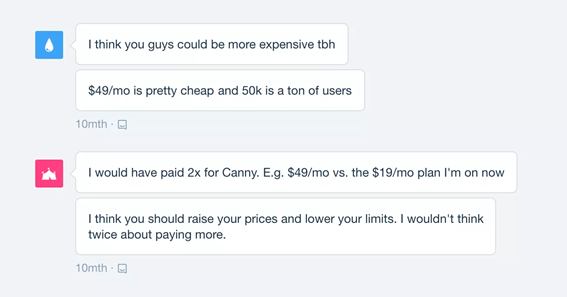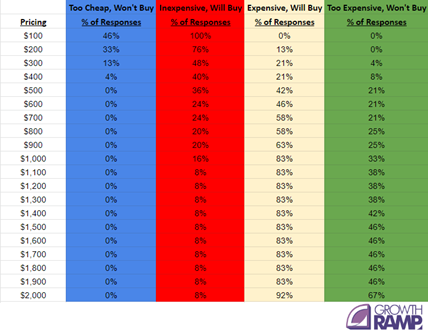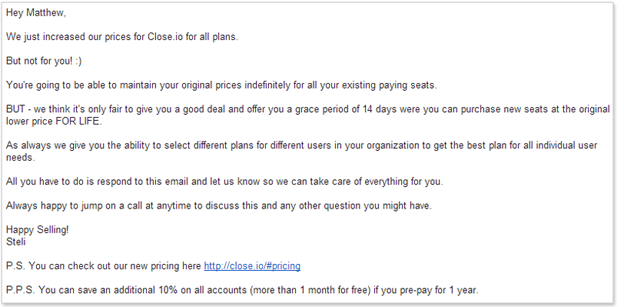In a survey of 96 SaaS companies with ARR (Annual Recurring Revenue) greater than $5 million, the companies that adjusted their prices continually exhibited extremely robust unit economics.
It would be surprising then to know that SaaS companies only spend 6 hours on their pricing strategy in the entire history of their business.
Imagine spending just 6 hours on your marketing or product development.
Scary, isn’t it?
When your product, marketing, and business functions go through so much change in just a month, it would be unwise to let your pricing structure remain the same.
But how often should you change your SaaS product’s pricing strategy? How to go about bringing such a change to your brand?
Let’s find out!
How often should you review your SaaS product’s pricing strategy?
According to Price Intelligently, the companies with the most success in revenue and adoption, review their pricing at least once per quarter and make tweaks or changes every 6 to 9 months.
A question may arise - Isn’t it enough to review pricing once a year?
Well, yes! But companies that are aiming for exponential growth need to opt for continual price optimization.
Let’s see why.
We can see from this graph that companies who continually review their prices and optimize them realize far more lifetime value (LTV) from their customers than it costs to acquire them.
The growth trajectory shoots up sooner and the company is in a position to finance more efficient growth.
That said, the frequency of your pricing reviews may depend on a lot of other factors such as the developments you are making, the growth in your field, the emergence of new competitors, and so on.
When to revamp your pricing strategy?
Just because your competitor increased their pricing tiers or introduced more features in their freemium model doesn’t mean you should too. You could drive customers away if you revamp your prices without justifying it. Here are six reasons that justify a revamp in your SaaS product’s pricing strategy.
Addition of new features
If there’s one thing common in product-led companies, it’s that their product keeps on getting better. If you have added many new features recently and your product’s value has increased far more than what you have priced it at, you can go for a revamp.
And the best part? Customers will be far more likely to pay for this price increase because they can see continuous improvements in the product.
Your product offers significant ROI than before
With each new update, has your product become more customer-friendly and value-adding for your customers? By measuring your product’s ROI continually, you can justify a pricing structure change.
Keep a watch on your competitor’s pricing
How often are your competitors changing their pricing? Are they limiting the features they offer in their free trial or are they increasing their prices for other tiers? What reasons are inducing them to revamp their pricing structure? Keeping a close eye on your competitors will help you unravel the answers to these questions and understand the price sensitivity of your target market.
You’re facing less negotiation from customers
Has any paid user ever told you, “You should charge way more for this”? If yes, then chances are they are speaking for many paid users.
But does that ever happen?
Yes! Here’s an example.
Sarah Hum of Canny received these messages from their paid users.
Your price does not justify the CPA (Cost per Acquisition)
Let’s suppose it costs you $300 to bring in a customer. You charge him $50 per month. How long would he have to renew his subscription for you to break even?
Make sure that you consider these numbers to set a price that justifies your CPA.
How to revamp your pricing strategy?
Revamping your pricing strategy means bringing a substantial change in your organization in the customer-facing areas. So, delve deep into what is change management and then follow these five tips to get your pricing revamp right.
Conduct market research
This includes gauging the customer’s opinions, analyzing your competitor’s pricing model, and testing different pricing strategies with your existing customers using surveys.
Deputy, a Sydney-based workforce management software company, tried market research to gauge customer affordability to understand how Deputy was priced relative to competitors in each core market.
Being a product-led company, they were hesitant to change their pricing initially but armed with the insights from the study, they raised the price of their monthly plans between 25% to 33%.
They didn’t see any dip in trial value or conversion through the funnel but the higher prices accelerated their revenue growth and the company could further invest in their product and customer experience.
Not long after, the company raised an $81M Series B funding which was the largest in Australian history.
Mix minor pricing changes with major ones
Pushing major price changes every few months, even if your product necessitates it, isn’t a great idea. Here’s how you can deploy minor pricing changes:
- Reduce your discount thresholds: If your organization is discount-heavy, instead of using discounts for every pricing tier, keep it for just one or two tiers.
- Moving features from plan to plan: Instead of having too many free features in your freemium model, shift some of these features to an upgrade plan.
- Reduction in metrics: If you’re allowing 10 emails per month in the first pricing tier, you can lower that number.
- Adding new features: Instead of giving away new features for free, shift them to the premium model.
Make use of the Price Sensitivity Meter
Which is that optimal price range where your customers would likely stick with you? Running a PSM analysis helps you figure that out.
A PSM analysis based survey involves four questions:
1. Inexpensive, Will Buy: At what price do you think the product is a good value for the money you are spending?
2. Expensive, Will Buy: At what price do you think the product is getting expensive, but you would still buy it after some consideration?
3. Too cheap: At what price the product is so inexpensive that you start doubting its quality?
4. Too expensive: What price do you think would be too expensive for you to buy the product?
You can set up all this data in a Google Sheet as shown below.
Turn this data into a line graph. It will look something like this:
The middle part will be your customer’s acceptable price range and the optimal price point.
Remember, that a PSM analysis will only give you the correct results if your respondents are familiar with the product and have provided experience-based opinions.
Run an impact analysis
Impact analysis measures how your existing customers will be affected by the pricing change. If the impact is marginal, it wouldn’t turn customers away. If not, you’ll have to look into some strategies to deal with your existing customers:
- Grandfathering: This means you guarantee the same price to your existing customers for either a certain period or forever. Here’s how Close.io followed grandfathering, but with a twist-
They gave their customers 14 days to add new user seats at the original price.
The result?
An increase in user seats which boosted the company’s average customer lifetime value by 10%.
- Offer a transfer discount: Offer a discount to existing customers on the new pricing to smoothen their transition. You can even try out a limited-time discount to motivate customers to take action faster.
- Taking away a few features: In a freemium-based model, you can discontinue some features that are free or set certain limits on those features.
- Direct price increase: You can increase pricing across all tiers, provided you justify the new pricing update. You can even opt for increasing the price significantly only for bigger customers.
Plan your price change communication strategy
The success of your new pricing strategy depends partially on when and how well you communicate the same to your users. Here are three things you need to take care of:
- Choose the right time: Avoid slow periods (summer) or super-active periods (Black Friday) as your users will be significantly less active or inactive. You will not get an accurate reaction to the price change.
- Focus on key points: If you want to justify the price revamp, focus on key points such as the time since the last price revamp, the difference in ROI back then and now, and the new features and updates you have made.
- Give your customers time: Complaints rise when you suddenly push a price update. Instead, before posting about the price change on your website, inform your existing users through an email or placing notification bars in admin dashboards, or sending a message in your private community group.
Wrapping up
One thing is certain - if you do not keep reviewing your pricing strategy and giving it the same attention as other business functions, you risk pushing your company down the growth trajectory.
But revamping your pricing strategy can be a daunting process - you can either grow your business exponentially or push loyal customers away.
The above-discussed examples and tips will help you set a new pricing structure to make sure that customers still stick with your SaaS.





No comments:
Post a Comment